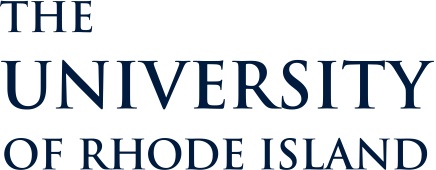Newswise — Two University of Rhode Island researchers have successfully tested a new fishing net configuration that will selectively catch the plentiful haddock without affecting declining stocks of cod and flounder. After additional tests and review by fishery managers, the net may allow fishermen to extend the number of days they are permitted to be at sea.
"The new gear catches just as much haddock as the existing gear, but without catching the species of critical concern," said David Beutel, a URI fisheries researcher who was joined by colleague Laura Skrobe in testing the net. "And it virtually eliminated all of the by-catch like flounders, cod, skates, lobsters and dogfish."
The new net configuration exploits the different behaviors exhibited by groundfish when a net is dragged toward them. Haddock, a high-value fish that has experienced a strong population surge, typically swim upward when a commercial fishing net is dragged along the bottom of the ocean. Cod, whose stocks are perilously low, and flounder swim downward when a net approaches.
At the suggestion of Rhode Island fishermen Jim O'Grady, Phil Ruhle Jr. and Phil Ruhle, Sr., and with the assistance of net builder Jonathan Knight, a net typically used in mid-ocean depths was rigged for use as a net dragged along the seafloor. The upper and rear portions of the net have the regulated six-inch mesh, which captures the haddock that swim upward and into the net, while the lower portion of the net has an eight-foot mesh easily allowing downward swimming cod and flounder to escape capture.
To scientifically document the effectiveness of the new net configuration, Beutel and Skrobe were awarded a $422,000 grant from the National Marine Fisheries Service's Cooperative Research Partners Program to conduct a series of trials. Using one fishing boat rigged with the new net and one rigged with existing gear, they conducted 30 side-by-side trials over five days at a closed area of Georges Bank in June. They plan to continue the trials in October, December and March before reporting their results to the New England Fisheries Management Council and the National Marine Fisheries Service.
"We're testing the net throughout the year because fish behavior changes at different times of the year, depending on when they're spawning and the depths and locations they're found at," said Beutel. "I expect that for the rest of our tests the net will work similar to the first trial, though I worry that at some point in the future the cod may change their behavior and not escape capture as readily." After their research is complete, and assuming the results are as positive as in the first trial, Beutel and Skrobe will make a recommendation to the New England Fisheries Management Council to certify the net. They hope the net will be available for use when the new quota year begins on May 1, 2006.
Fishermen are allowed a certain number of days at sea " called "A days" -- when they could potentially catch species of concern like cod and flounder. They are also allowed additional days at sea " called "B days" " as long as the gear used on those days does not affect species of concern. Because existing fishing gear captures all groundfish indiscriminately " cod, haddock and flounder, among others " that gear can only be used on A days. The new net will allow fishermen to selectively fish for haddock on B days.
"The cooperative nature of this process " between the fishermen, the scientists, and the fishery managers -- has been key," Beutel said. "We're very excited about the possibilities. It's going to give fishermen access to haddock while allowing the cod stocks to rebuild at the same time."
